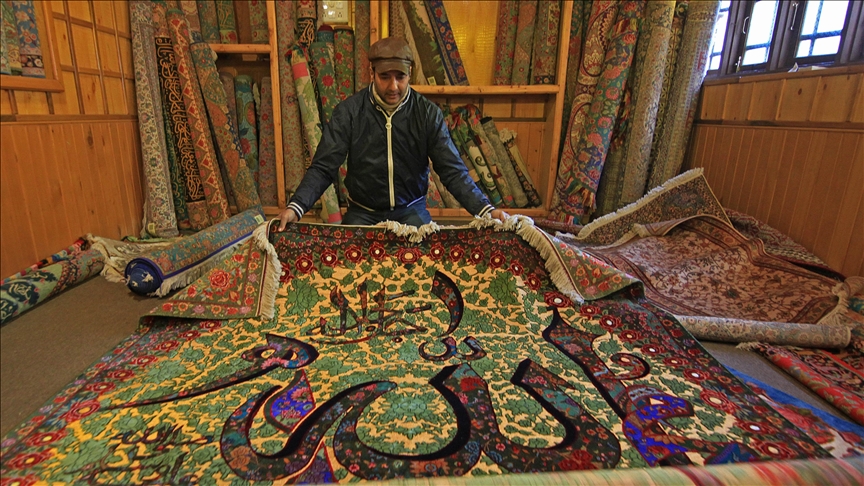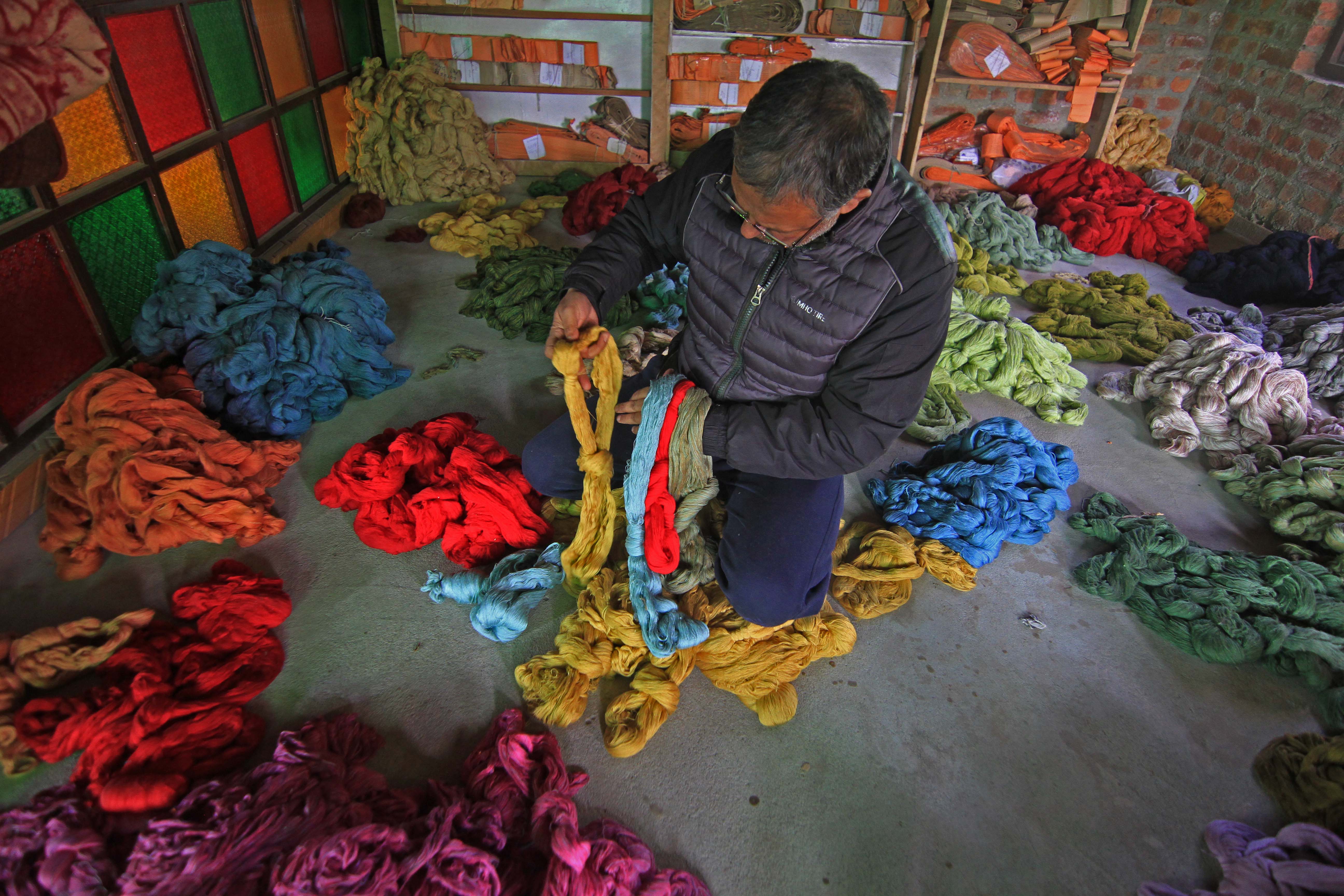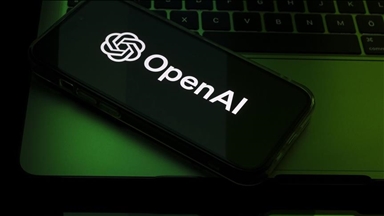Knots and AI: Weaving the future of Kashmiri carpets
Experts and artisans believe AI can revolutionize and revive the industry
 Photos: Faisal Khan (Anadolu Agency)
Photos: Faisal Khan (Anadolu Agency)
Jammu and Kashmir
- AI can prove to be biggest technological leap in the history of Kashmiri handmade carpets, says Zubair Ahmad, director of a local carpet technology institute who has developed a groundbreaking software
SRINAGAR, Jammu and Kashmir
In Kashmir, the process of making Persian-inspired handmade carpets has remained largely unchanged for the past 500 years, with the only technological intervention being the use of computers in the designing process.
Is this industry, which still relies on work by hand for most of its processes, ready for the next major disruptive technology – artificial intelligence?
Both experts and artisans believe so, going as far as to wager that AI will revolutionize it and help it flourish.
Shahnawaz Sofi, a second-generation carpet maker from Rathpora locality in Srinagar, the capital of Indian-administered Kashmir, has been using computers to create bold, unconventional designs, one of which adorns the billion-dollar home of Asia’s richest person, Mukesh Ambani. He believes that AI can revolutionize the designs.
Three key people are involved in the production of a carpet. A naqash draws the design on paper. A “taleem” writer encodes the design into a unique script called taleem (literally, education). A “qaleenbaf” (the carpet maker) weaves the design onto the warp and weft, one knot at a time, according to the pattern dictated by the taleem. An intricately designed 3x5 feet rug has nearly 2 million knots.
Earlier, the designing and writing of taleem was done by hand, which could take weeks or months. Written on long rectangular strips of brown paper, each representing a small portion of the design, the carpet’s code would be hung through the strings of the yarn for the weaver to read.
A fully-encoded design for an average-sized carpet makes a hefty bundle of paper tied together with thread. Such bundles were passed on from generation to generation. Because of the time-consuming nature of the process, manufacturers usually replicated old designs, leaving little scope for innovation.

Carpet code
Computers helped Shahnawaz unleash his creativity. He now draws a design in a tailor-made program aptly named naqash. Each tiny square of the file represents a knot on the final design. With the click of a mouse, he assigns every knot a color and taleem code. A printer then spews out the complete code for the carpet.
“I try random combinations. You can say I go wild with the mouse. I think I am teaching the computer the design, and in the process, it is helping me come up with some brilliant ideas,” he told Anadolu.
“One big advantage is that a weaver can, for the first time, see a picture of a fully-designed carpet. Earlier, he only witnessed a design unfold fully as he went on to weave it,” he said.
The creator of this revolutionary program, Zubair Ahmad, director of the Indian Institute of Carpet Technology in Srinagar, is looking forward to what could be the biggest technological leap in the history of Kashmiri handmade carpets.
He said his institute has held several rounds of consultations with an Indian IT firm named IVA (International Virtual Assistance Pvt. Ltd.) to develop software that would generate a design with a complete taleem code simply by feeding it a picture, or generate a picture of a fully-designed carpet from strips of taleem code.
“Many exquisite designs that exist on paper only can be resurrected in a much faster way if we succeed in developing this program,” said Zubair.
But the success of an AI-enabled program depends on the input. The more specific and better the input, the better the results.
“This would require familiarizing AI tools with traditional designs and the decades-old taleem code. Since the code was written by hand, each taleem writer wrote the signs differently. A program has to understand these variations to successfully recreate old designs,” said Zubair.
A design thus generated could be shared with a buyer who may suggest changes at this stage. A complete design at the pre-weaving stage minimizes the chances of errors during weaving, he said.
Already, an AI-enabled QR code system developed by Zubair after more than a year of hard work ensures that a buyer can track a carpet to the original maker, in addition to accessing the details of the product.
Since it was developed in 2022, more than 12,000 Kashmiri handmade carpets have been tagged with this first-of-its-kind QR labeling method in the world. The label is fused into the carpet to prevent misuse.
Zubair said the AI-integrated blockchain mechanism ensures the tracking of a carpet. A lab at his institute can track whenever a buyer, say in Germany, scans the QR code.
The code has been a boon for the local carpet industry which, according to the region’s handicrafts department, employs 50,000 people and sells carpets worth around $60 million a year.
Riyaz Kawoosa, an exhibition officer with the department, one of many officers who have groomed Shahnawaz into a tech-savvy carpet entrepreneur during the past decade, said fakes sold in the name of Kashmiri carpets have damaged the industry.
“We believe AI-enabled technology, which ensures the genuineness of the product, will ultimately lead to increased customer satisfaction. This is good news for local artisans and businessmen,” he said.
UNESCO has declared Srinagar a Creative City of Crafts and Folk Art. It is home to paper mache, copper carvings, shawls, wood carvings, embroidery, carpets and other handicrafts, employing thousands of people.

Technology and tradition
Rafiq Ahmad Sofi, 57, Shahnawaz’s elder brother, said all technological advancements would be useful only if weavers can make a decent living at the end of the day.
“I started making carpets alongside my father when I was a teenager. I have seen hundreds of artisans give up this craft for manual labor or other professions because of lower wages. The benefits of technology should percolate to the needy,” he said.
Keeping disadvantaged artisans in mind, especially those living in remote areas, the carpet institute will in the next four to six months make available software that enables a weaver to download a digitized design and taleem from its website for a nominal charge.
A weaver need not work for a manufacturer only because he doesn’t have a design of his own. And like Shahnawaz, they can also “go wild” with the mouse and create designs to the buyer’s taste.



